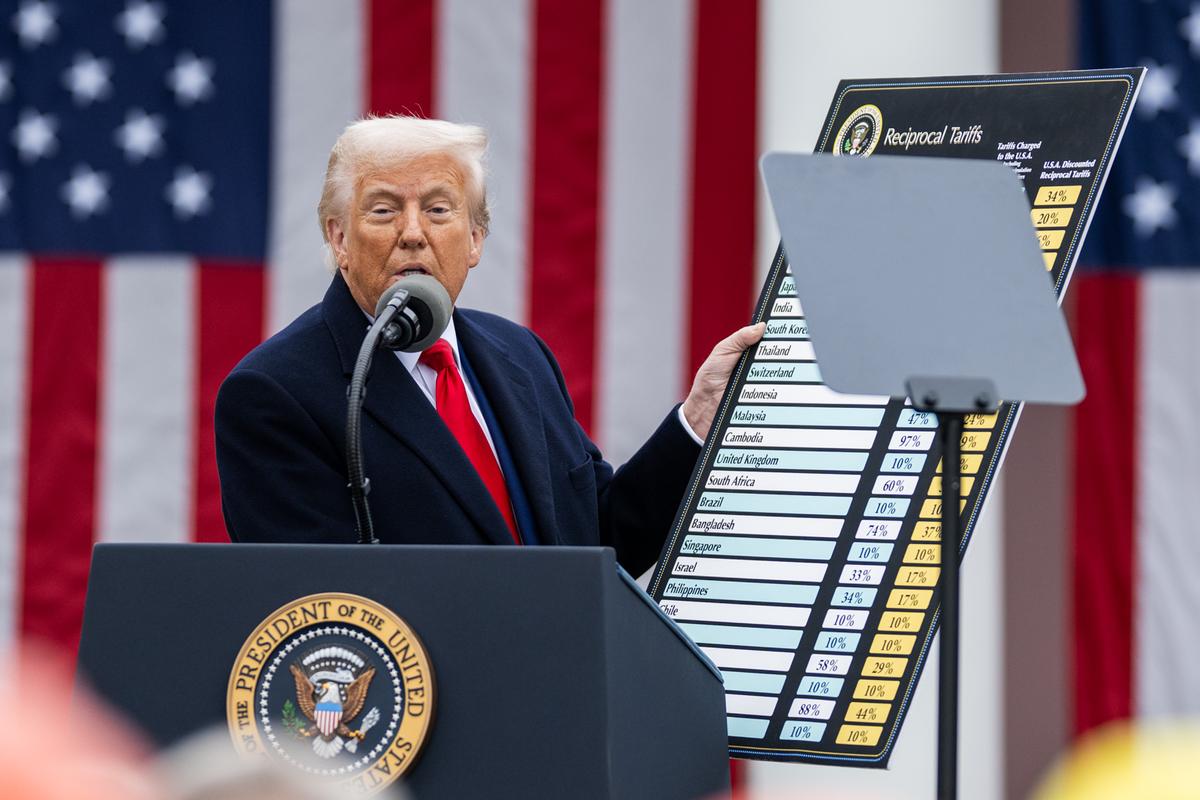On April 2, US President Donald Trump announced tariffs on products coming into the US from countries around the world. The tariffs mark a big change in international trade, and have already had huge negative effects worldwide.
In the short time he has been president, Mr. Trump has already raised tariffs several times. He has put tariffs on aluminum and steel, as well as foreign-made cars. Mr. Trump has put tariffs on countries the US competes with, like China, and also on countries that were once strong allies, like Canada and Mexico.
Last Wednesday, Mr. Trump announced a 10% tariff on products from 185 countries around the world. He also announced extra tariffs on 57 countries. He claims these “reciprocal” tariffs match tariffs those countries have put on the US.
Note: Explore the Tariff Simulator at the bottom of this article to get an idea of how the new tariffs could change to costs of common items.

(Source: Daniel Torok/White House [Public domain], via Wikimedia Commons.)
The results will be felt strongly in the US, where nearly everything will now cost more. A research group at Yale University says Mr. Trump’s tariffs will cost American families around $2,100 a year. The higher costs will probably cause people to buy less. That could lead to companies losing money and cutting jobs.
Similar patterns could happen in foreign countries as tariffs make it harder for companies to sell products in the US.
The tariff announcement has caused huge effects worldwide. The US stock market fell sharply following the announcement. Fears of a possible trade war triggered similar drops in stock markets around the world.
😕
This image has not been loaded because of your cookie choices. To view the content, you can accept 'Non-necessary' cookies.
The tariff announcement has cause huge effects worldwide. The US stock market fell sharply following the announcement. Fears of a possible trade war triggered similar drops in stock markets around the world. Above, stock market news is seen on the New York Stock Exchange in New York last Thursday.
Stock markets continued to fall on Monday, five days after the tariffs were announced. For many people, falling stock market prices mean that the money they have saved is shrinking.
Mr. Trump described his tariffs as a “medicine” and suggested that they will help the US. He believes high tariffs will lead to more products being made in the US. But many products would cost far more if they were made in America.
Many economists believe the tariffs will cause serious problems for businesses and governments worldwide. And these problems may not be easy to fix.
Many experts say the tariffs weren’t thought out well, and won’t have the effects that Mr. Trump hopes they will. They point out that the math used by the White House doesn’t match existing tariffs from other countries at all.
😕
This image has not been loaded because of your cookie choices. To view the content, you can accept 'Non-necessary' cookies.
The White House warned countries not to respond with their own tariffs. But many countries say they plan to do just that. The US already seems to have started a trade war with China. Above, a cargo ship loaded with containers for other countries leaves China on April 6.
The tariffs have even worried Republicans and other supporters of Mr. Trump. Businessman Bill Ackman, a strong supporter of Mr. Trump, described the tariffs as starting an “economic nuclear war”.
The White House warned countries not to respond with their own tariffs. But many countries say they plan to do just that.
The US already seems to have started a trade war with China. Mr. Trump has now added 54% in tariffs on Chinese products since February. In response to Wednesday’s announcement, China said it will add a 34% tariff on US products. On Monday, Mr. Trump threatened China with an extra 50% tariff, if it did not drop this plan.
Mr. Trump says he won’t change his mind about the tariffs. But that may change if problems with the economy continue to upset more and more of his supporters.
Note: Explore the Tariff Simulator at the bottom of this article to get an idea of how the new tariffs could change to costs of common items.
Did You Know…?
Canada and Mexico, which have already been hit with 25% tariffs, weren’t included in Wednesday’s new tariffs. Some countries, like Russia, North Korea, Cuba, and Belarus, avoided tariffs completely. Many people were surprised that Mr. Trump decided to add tariffs against Heard Island and McDonald Islands. These are Australian territories in Antarctica, and only penguins live there.
Update: On April 9, Mr. Trump “paused” most “reciprocal” tariffs for 90 days. This means most countries now have a 10% tariff rate. But after China raised tariffs on US products, Mr. Trump increased the tariff on products from China to 125%.
Update: On April 10, the White House said that the 125% tariff on China was on top of the earlier 20% tariff, meaning the tariff on products from China is 145%. In response, China has raised tariffs on US products to 125%.
